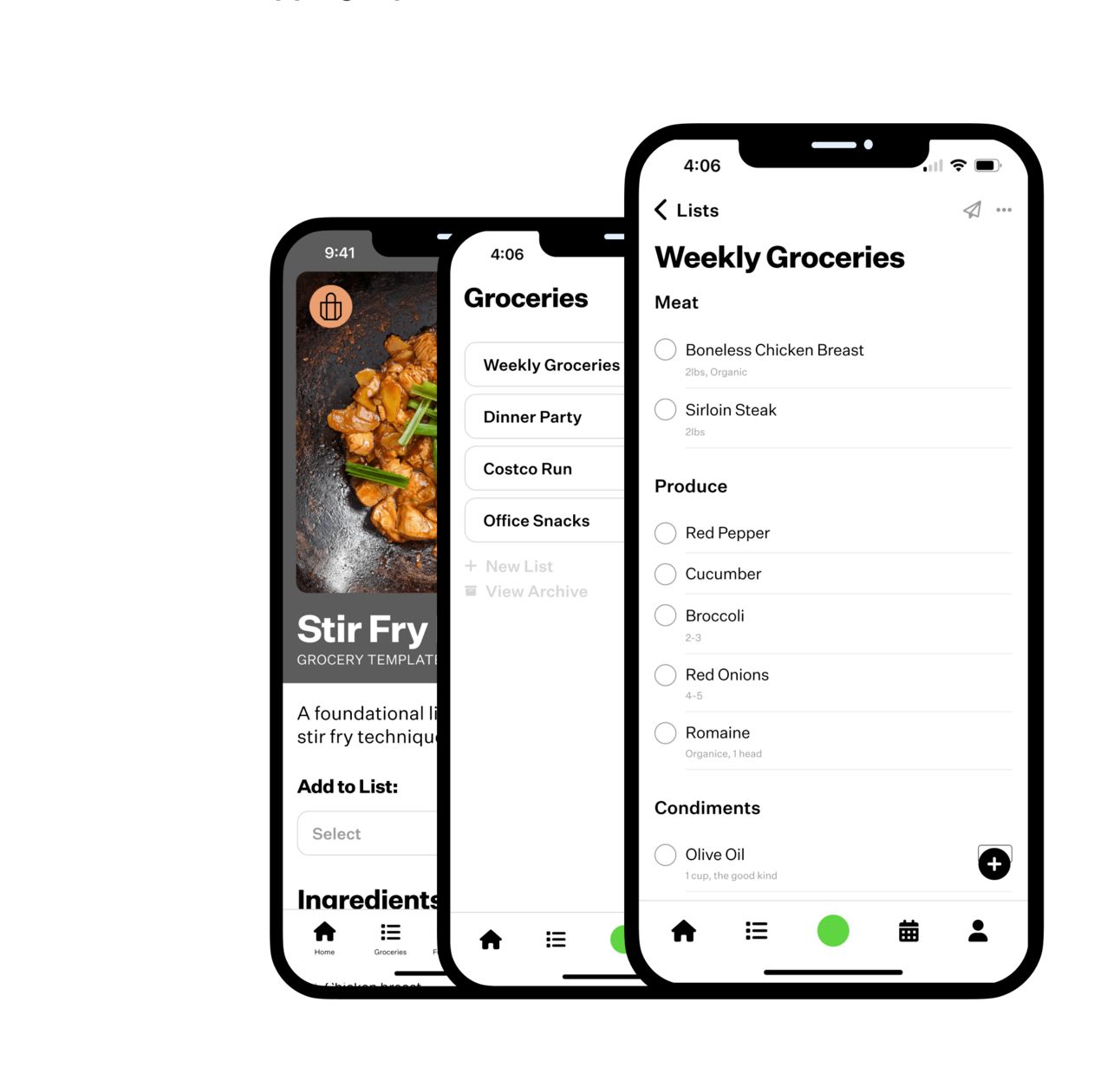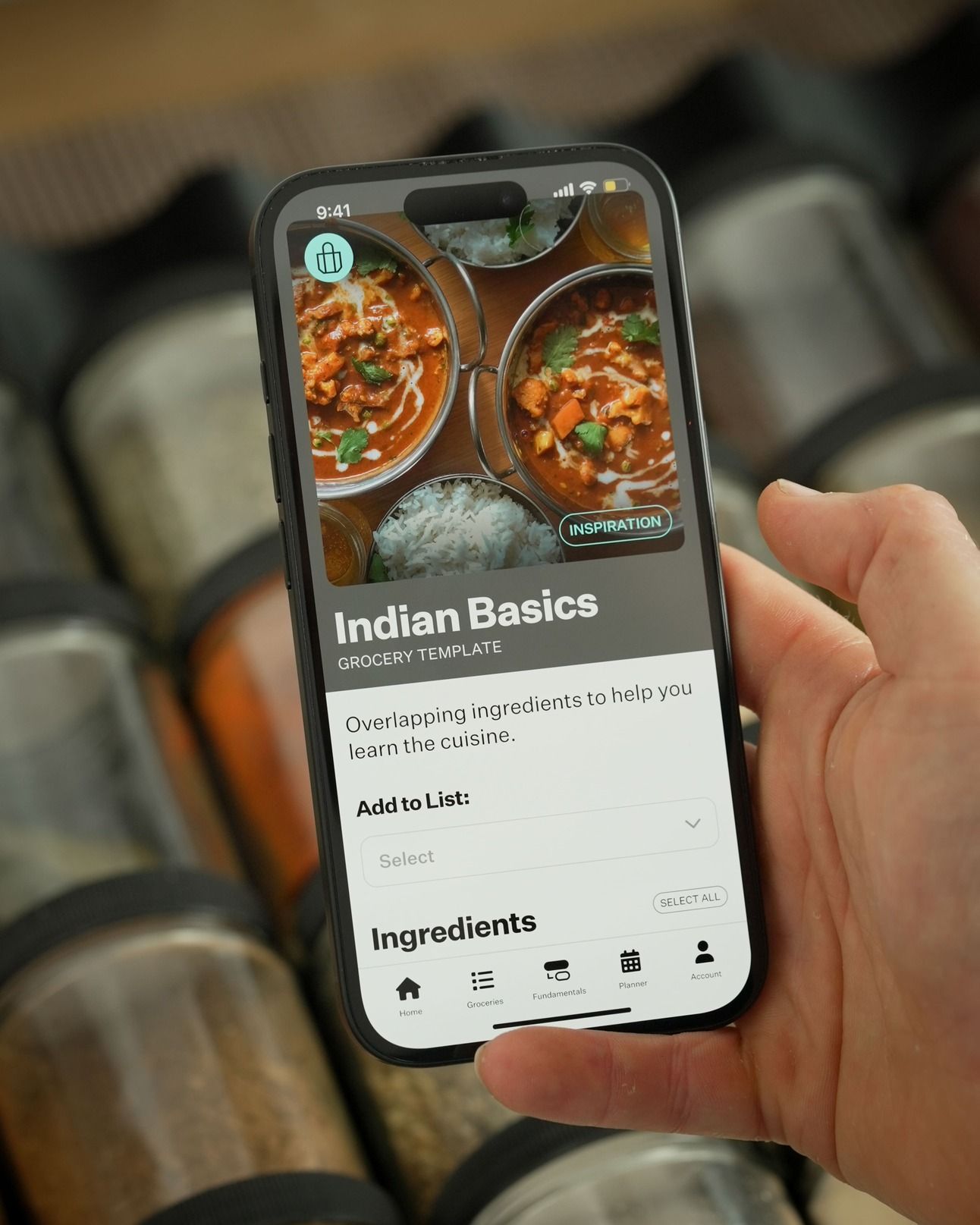- The Mouthful
- Posts
- Bibimbap Framework
Bibimbap Framework
& Grocery lists, Asian eats, solving 'warmed-over' flavor, + khao soi
Good morning. This is the last week of our app fundraising. Thanks to all of you who have supported so generously. There are a few days left to take advantage of Kickstarter exclusive access, rewards, and merch.
We could not be more excited to finish developing the app and bring this to life over the next few months!
RECIPE BREAKDOWN🤯
Bibimbap framework
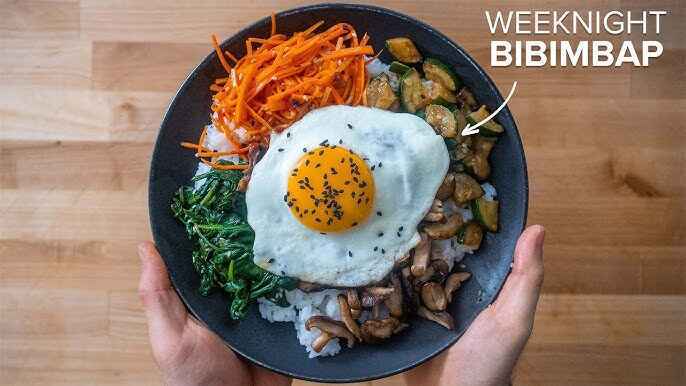
Bibimbap isn’t an exact recipe, it’s really more of a blueprint to start with: In Korean, “bibim” means mixed and “bap” means cooked rice. In other words, the tradition is to use whatever vegetables and proteins you already have around.
Why you should learn this
This versatile framework is perfect for using up leftover ingredients, especially bits of produce sitting in your crisper dish. Since there's no single "correct" way to make this dish, you can adapt it differently each time.
What you’ll need
1— Cooked rice (bap)
Short grain is common, but we’ve seen amazing bibimbaps with even black rice or other grains.
2 — Runny egg and/or marinated protein
The yolk acts like a second sauce.
If you want to add a protein, a ‘bulgogi’ style marinade is common, which gets its signature flavors from sesame oil, garlic, soy sauce, and brown sugar. Make thin slices of meat or use ground meat for quick marination and cooking.
3 — Vegetable sides
These can be quickly sautéed or pickled. Optionally season with soy sauce and/or sesame oil.
4 — Sauce
Usually a gochujang sauce blended smooth with aromatics (garlic/ginger), vinegar, sesame oil, and sugar.
In a pinch, a sriracha, hot sauce, or jarred chili sauce will do the trick. The sauce is there for heat, color, and aroma.
How to make it
Make the rice: get it steaming or use leftover, prepped rice.
Prep veggie sides: Chop then sauté or pickle any veggies you will be using.
Make the sauce: Blend the sauce or grab what you’re going to use.
Fry the egg & cook proteins: Keep the yolk runny. Sear any proteins until well browned.
Assemble the bowl: lay down some rice followed by sauce, veggies, meat & lastly an egg on top. Optionally garnish with sesame seeds or scallions.
If you want to follow a specific recipe, check out Ethan’s version here.
RECIPE RECOMMENDATIONS ✅
Asian inspired eats
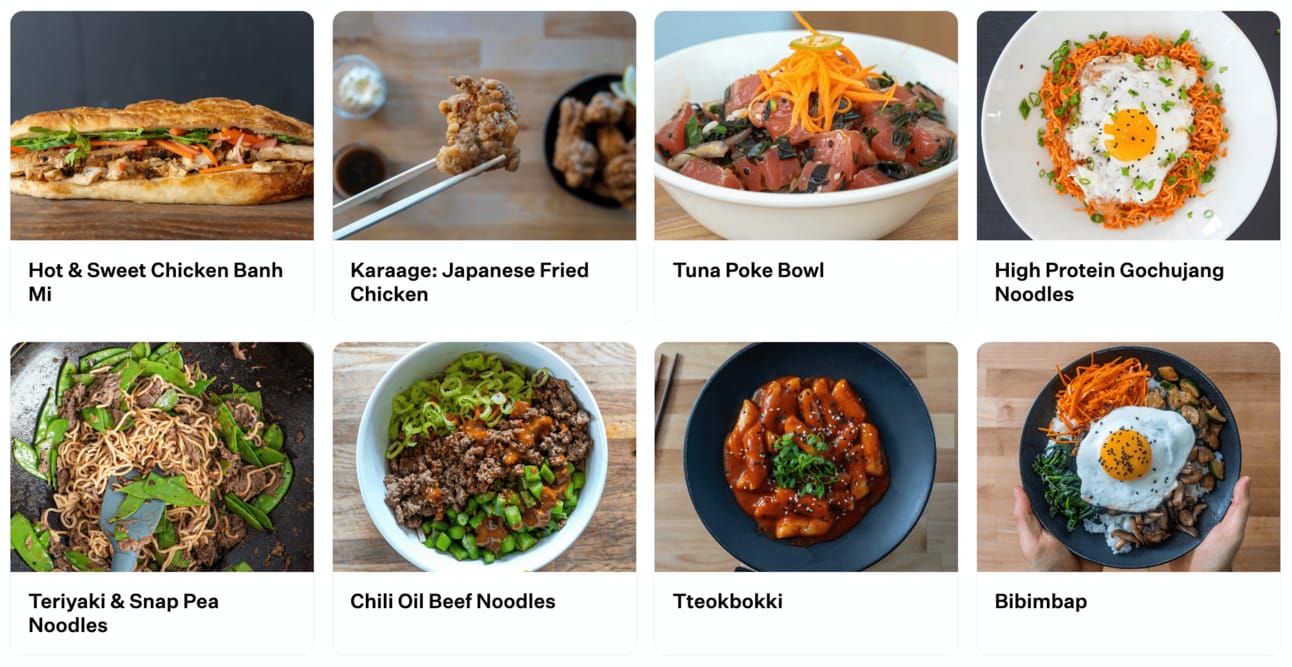
If you’re into bibimbap’s flavor profile or want more Asian inspired recipes, check out the collection below:
FOOD TRENDS 🚀
Ditching notes app for a better grocery list
Grocery shopping decides what you can cook. It’s the invisible force shaping every meal. Grocery shopping isn’t just an errand; it’s a skill just like cooking. A skill that sets you up to succeed before you even step into the kitchen.
The problem? Most of us resort to a solution that’s not integrated with the rest of our cooking process and meals — paper, a default notes app, a third party system, texts, or just in our heads.
In our app, we’ve carefully designed a grocery hub for maximum flexibility and ease of use:
Make multiple lists. Easily add custom ingredients and notes.
Archive or duplicate lists so you never have to restart from a blank slate.
Browse recipes and add their ingredients right into your lists.
Or, you can shop pre-made templates and then use up those items with recommended recipes or frameworks later:
With effective shopping, you start thinking in terms of possibilities with what you can make. And when you have flexible recipes and intuitive frameworks to help you make the most of your grocery haul, you’ll waste less food.
That’s why every home cook needs a grocery list that can be part of a connected system. A way to bring your ingredients, ideas, and habits together in a way that works for you day after day.
READER Q&A 🧠
Warmed-over flavor
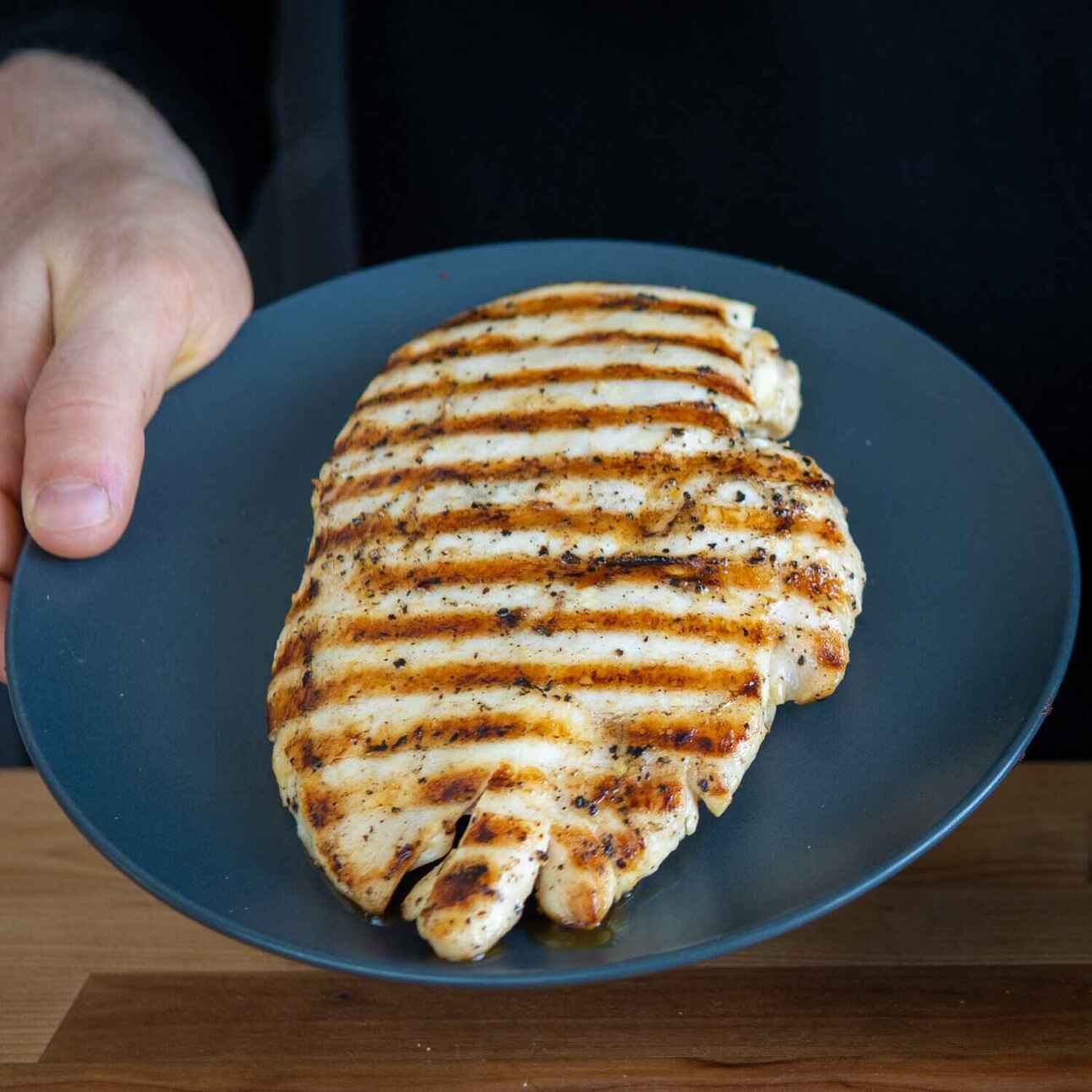
Question: “How do you avoid the warmed over flavor in meat?” - Laura J.
Answer: When reheating meat, some people experience what's called "warmed-over flavor"—a stale, cardboard-like taste caused by oxidation.
If this is something you experience, here are a few tips to try and avoid it:
Cook with acidic ingredients like lime, lemon, or vinegar.
Store meat properly by refrigerating it quickly after cooking and eating it within 2-3 days.
Use fresh herbs or generous seasonings to provide pleasant aromas to the dish. Warmed over flavor is sometimes only noticeable in bland chicken.
Don’t overcook meat - it exacerbates the oxidation. We suspect this is the biggest culprit for people. Use a thermometer to make sure you’re not cooking chicken breast much beyond the 160°F range!
Have a culinary question? Reply to send it in for a chance to be featured and get your question answered.
WINNING READER SUBMISSION 🏆
Khao soi
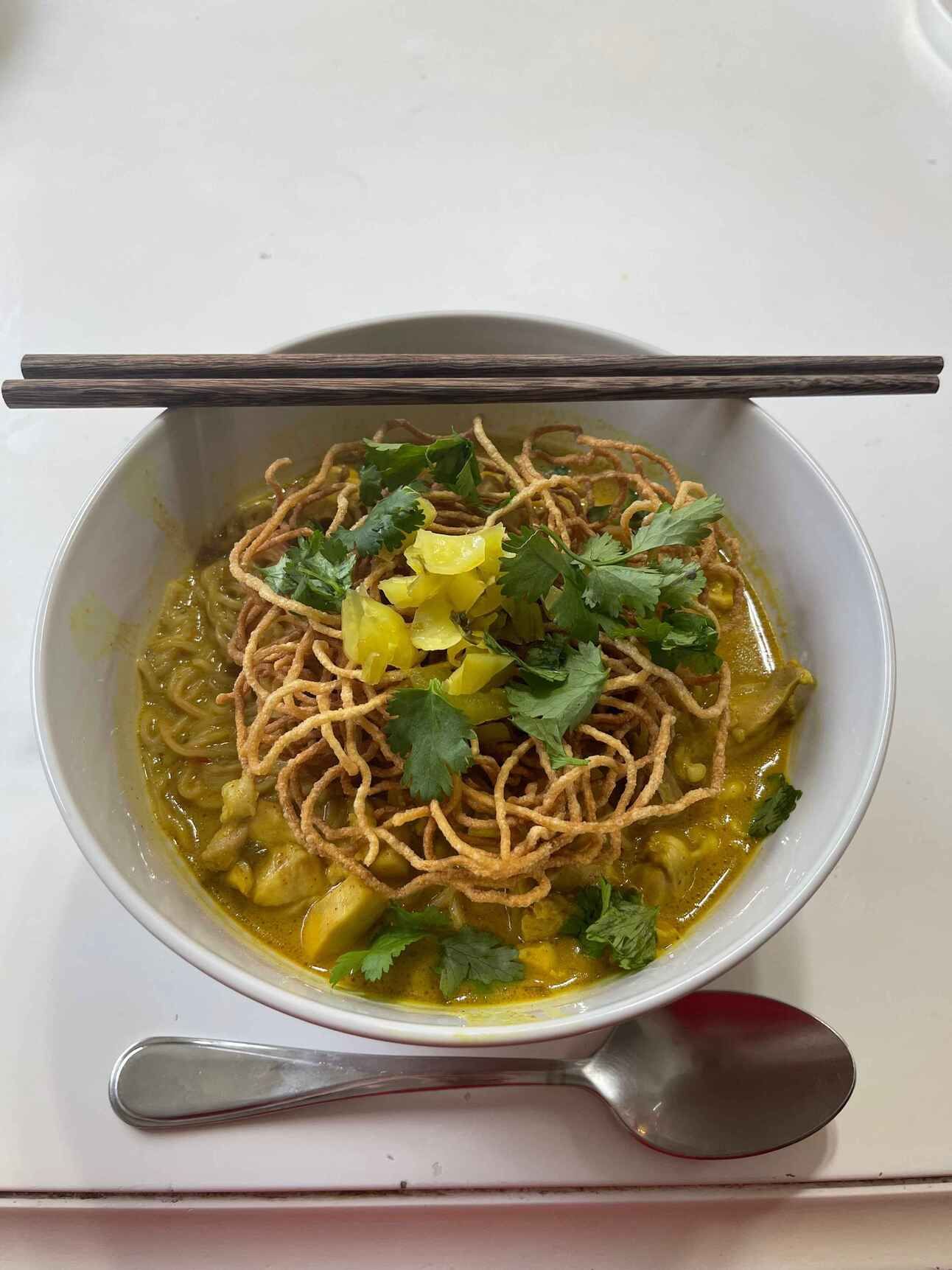
This week’s dinner winner is Dwain M., who made Chiang Mai Khao Soi chicken noodle soup using fried noodles, cilantro, and chopped pickled mustard greens on top.
Reply with your best home-cooked food photos for a chance to win & be featured!
EXTRA HELPINGS 🍽️
A read: Non-alcoholic Bottle Shops
In a minute or less: How to Peel a Mango
What we’re watching: Salted Butter Taste Test
Food science: Velveting Meat Technique
Last chance to be a Cook Well app founder: Get Kickstarter Exclusive Perks

Was this forwarded to you? Subscribe here.
Not reaching your inbox? Try this.
Need more inspiration? View the newsletter backlog.

